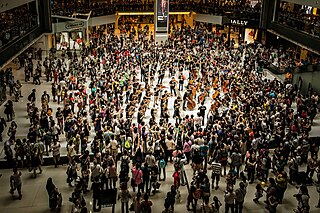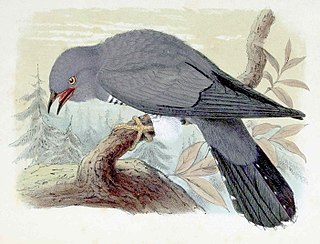Musicology is the scholarly analysis and research-based study of music. Musicology departments traditionally belong to the humanities, although some music research is scientific in focus. Some geographers and anthropologists have an interest in musicology, so the social sciences also have an academic interest. A scholar who participates in musical research is a musicologist.

Ethnomusicology is the multidisciplinary study of music in its cultural context, investigating social, cognitive, biological, comparative, and other dimensions involved other than sound. Ethnomusicologists study music as a reflection of culture and investigate the act of musicking through various immersive, observational, and analytical approaches drawn from other disciplines such as anthropology to understand a culture’s music. This discipline emerged from comparative musicology, initially focusing on non-Western music, but later expanded to embrace the study of any and all different kinds of music of the world.
Organology is the science of musical instruments and their classifications. It embraces study of instruments' history, instruments used in different cultures, technical aspects of how instruments produce sound, and musical instrument classification. There is a degree of overlap between organology, ethnomusicology and the branch of the science of acoustics devoted to musical instruments.
Cultural ecology is the study of human adaptations to social and physical environments. Human adaptation refers to both biological and cultural processes that enable a population to survive and reproduce within a given or changing environment. This may be carried out diachronically, or synchronically. The central argument is that the natural environment, in small scale or subsistence societies dependent in part upon it, is a major contributor to social organization and other human institutions. In the academic realm, when combined with study of political economy, the study of economies as polities, it becomes political ecology, another academic subfield. It also helps interrogate historical events like the Easter Island Syndrome.
A soundscape is the acoustic environment as perceived by humans, in context. The term was originally coined by Michael Southworth, and popularised by R. Murray Schafer. There is a varied history of the use of soundscape depending on discipline, ranging from urban design to wildlife ecology to computer science. An important distinction is to separate soundscape from the broader acoustic environment. The acoustic environment is the combination of all the acoustic resources, natural and artificial, within a given area as modified by the environment. The International Organization for Standardization (ISO) standardized these definitions in 2014.
Natural sounds are any sounds produced by non-human organisms as well as those generated by natural, non-biological sources within their normal soundscapes. It is a category whose definition is open for discussion. Natural sounds create an acoustic space.

Field recording is the term used for an audio recording produced outside a recording studio, and the term applies to recordings of both natural and human-produced sounds. It also applies to sound recordings like electromagnetic fields or vibrations using different microphones like a passive magnetic antenna for electromagnetic recordings or contact microphones. For underwater field recordings, a field recordist uses hydrophones to capture the sounds and/or movements of whales, or other aquatic organisms. These recordings are very useful for sound designers.
Acoustic ecology, sometimes called ecoacoustics or soundscape studies, is a discipline studying the relationship, mediated through sound, between human beings and their environment. Acoustic ecology studies started in the late 1960s with R. Murray Schafer a musician, composer and former professor of communication studies at Simon Fraser University with the help of his team there as part of the World Soundscape Project. The original WSP team included Barry Truax and Hildegard Westerkamp, Bruce Davies and Peter Huse, among others. The first study produced by the WSP was titled The Vancouver Soundscape. This innovative study raised the interest of researchers and artists worldwide, creating enormous growth in the field of acoustic ecology. In 1993, the members of the by now large and active international acoustic ecology community formed the World Forum for Acoustic Ecology.
Ecocriticism is the study of literature and ecology from an interdisciplinary point of view, where literature scholars analyze texts that illustrate environmental concerns and examine the various ways literature treats the subject of nature. It was first originated by Joseph Meeker as an idea called "literary ecology" in his The Comedy of Survival: Studies in Literary Ecology (1972).

The environmental humanities is an interdisciplinary area of research, drawing on the many environmental sub-disciplines that have emerged in the humanities over the past several decades, in particular environmental literature, environmental philosophy, environmental history, science and technology studies, environmental anthropology, and environmental communication. Environmental humanities employs humanistic questions about meaning, culture, values, ethics, and responsibilities to address pressing environmental problems. The environmental humanities aim to help bridge traditional divides between the sciences and the humanities, as well as between Western, Eastern, and Indigenous ways of relating to the natural world and the place of humans within it. The field also resists the traditional divide between "nature" and "culture," showing how many "environmental" issues have always been entangled in human questions of justice, labor, and politics. Environmental humanities is also a way of synthesizing methods from different fields to create new ways of thinking through environmental problems.

Alan Parkhurst Merriam was an American ethnomusicologist known for his studies of music in Native America and Africa. In his book The Anthropology of Music (1964), he outlined and develops a theory and method for studying music from an anthropological perspective with anthropological methods. Although he taught at Northwestern University and University of Wisconsin, the majority of his academic career was spent at Indiana University where he was named a professor in 1962 and then chairman of the anthropology department from 1966 to 1969, which became a leading center of ethnomusicology research under his guidance. He was a co-founder of the Society for Ethnomusicology in 1952 and held the elected post of president of that society from 1963 to 1965. He edited the Newsletter of the Society for Ethnomusicology from 1952 to 1957, and he edited the journal Ethnomusicology from 1957 to 1958.
Steven Feld is an American ethnomusicologist, anthropologist, and linguist, who worked for many years with the Kaluli (Bosavi) people of Papua New Guinea. He earned a MacArthur Fellowship in 1991.

Sociomusicology, also called music sociology or the sociology of music, refers to both an academic subfield of sociology that is concerned with music, as well as a subfield of musicology that focuses on social aspects of musical behavior and the role of music in society.

Soundscape ecology is the study of the acoustic relationships between living organisms, human and other, and their environment, whether the organisms are marine or terrestrial. First appearing in the Handbook for Acoustic Ecology edited by Barry Truax, in 1978, the term has occasionally been used, sometimes interchangeably, with the term acoustic ecology. Soundscape ecologists also study the relationships between the three basic sources of sound that comprise the soundscape: those generated by organisms are referred to as the biophony; those from non-biological natural categories are classified as the geophony, and those produced by humans, the anthropophony.
Ecosemiotics is a branch of semiotics in its intersection with human ecology, ecological anthropology and ecocriticism. It studies sign processes in culture, which relate to other living beings, communities, and landscapes. Ecosemiotics also deals with sign-mediated aspects of ecosystems.

Ecofeminism is a branch of feminism and political ecology. Ecofeminist thinkers draw on the concept of gender to analyse the relationships between humans and the natural world. The term was coined by the French writer Françoise d'Eaubonne in her book Le Féminisme ou la Mort (1974). Ecofeminist theory asserts a feminist perspective of Green politics that calls for an egalitarian, collaborative society in which there is no one dominant group. Today, there are several branches of ecofeminism, with varying approaches and analyses, including liberal ecofeminism, spiritual/cultural ecofeminism, and social/socialist ecofeminism. Interpretations of ecofeminism and how it might be applied to social thought include ecofeminist art, social justice and political philosophy, religion, contemporary feminism, and poetry.
Sound maps are digital geographical maps that put emphasis on the sonic representation of a specific location. Sound maps are created by associating landmarks and soundscapes.

Birdsong has played a role in Western classical music since at least the 14th century, when composers such as Jean Vaillant quoted birdsong in some of their compositions. Among the birds whose song is most often used in music are the nightingale and the cuckoo.
Ethnomusicology is the study of music from the cultural and social aspects of the people who make it. It encompasses distinct theoretical and methodical approaches that emphasize cultural, social, material, cognitive, biological, and other dimensions or contexts of musical behavior, in addition to the sound component. While the traditional subject of musicology has been the history and literature of Western art music, ethnomusicology was developed as the study of all music as a human social and cultural phenomenon. Oskar Kolberg is regarded as one of the earliest European ethnomusicologists as he first began collecting Polish folk songs in 1839. Comparative musicology, the primary precursor to ethnomusicology, emerged in the late 19th century and early 20th century. The International Musical Society in Berlin in 1899 acted as one of the first centers for ethnomusicology. Comparative musicology and early ethnomusicology tended to focus on non-Western music, but in more recent years, the field has expanded to embrace the study of Western music from an ethnographic standpoint.












